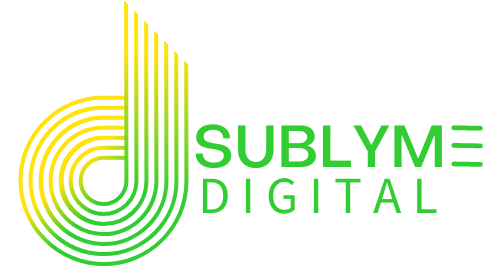7 Steps to Creating SEO Blog Posts That Dominate Search
Key Takeaways
- SEO-optimized blog posts can significantly improve your website’s visibility and organic traffic.
- Focus on keyword research, user intent, and high-quality content to align with Google’s ranking factors.
- Incorporate on-page SEO techniques like meta descriptions, internal linking, and optimized images.
- Regularly update and refresh your content to maintain relevance and rankings.
- Use structured data, such as FAQs, to enhance your blog’s search engine performance.
Writing blog posts that rank on Google isn’t exactly a walk in the park. It’s not just about throwing some keywords into your content and hoping for the best anymore. These days, creating SEO-optimized content is a mix of strategy, creativity, and a bit of trial and error.
So, how do you write blog posts that not only get seen but also rank high on Google? It’s not magic, but it’s not entirely straightforward either. In this guide, I’ll walk you through 7 foolproof steps to writing SEO-optimized blog posts that deliver results.
Some of these tips may seem obvious, but others might make you pause and think, “Why haven’t I been doing this all along?” Either way, by the end of this, you’ll have a clear roadmap to creating content that works for both your readers and search engines.
1. Start with Keyword Research
Keyword research is where it all begins. Without the right keywords, your blog post is like a ship without a compass—it might float, but it’s not going anywhere specific.
The key here is to find keywords that strike a balance between search volume and competition. Sure, targeting “SEO tips” might sound appealing, but it’s so broad and competitive that your content might get lost in the shuffle. Instead, focus on long-tail keywords like “SEO tips for small businesses” or “how to write SEO blog posts.”
Tools like Google Keyword Planner, Ahrefs, or SEMrush can help you uncover these gems. But don’t just rely on tools—think about what your audience might actually type into Google. Sometimes, the best insights come from simply putting yourself in their shoes.
2. Understand User Intent
Here’s the thing about keywords—they’re only useful if they align with user intent. In other words, why is someone searching for this term? Are they looking for information, trying to solve a problem, or ready to make a purchase?
Take the query “how to write SEO blog posts,” for example. Someone searching for this likely wants a step-by-step guide, not a vague overview. So, your content should deliver exactly that: clear, actionable steps with examples and maybe even a few personal anecdotes.
Pro Tip: Check out Google’s “People Also Ask” section. It’s a goldmine for understanding what people want to know and can help you shape your content to match their needs.
3. Craft a Compelling Title and Introduction
Your title is your first impression, so make it count. It should be catchy, descriptive, and include your primary keyword. For instance, “7 Foolproof Steps to Writing SEO-Optimized Blog Posts That Rank” is clear and action-oriented, which makes it hard to ignore.
But the title is only half the battle. Your introduction needs to hook readers and make them want to keep going. Start with a relatable scenario, a surprising fact, or even a question. For example, “Have you ever poured hours into a blog post only to see it buried on page three of Google?” That’s the kind of opening that makes readers think, “Yep, that’s me,” and keeps them reading.
SEO isn’t just about keywords—it’s about creating content that solves problems, answers questions, and delivers value to your audience.
4. Optimize for On-Page SEO
On-page SEO isn’t just about sprinkling keywords into your content—it’s about making your blog post as search-engine-friendly as possible. Here are the basics:
- Write a meta description that’s concise and includes your primary keyword.
- Use headings (H1, H2, H3) to structure your content and make it easier to read.
- Add internal links to related content on your site. For example, check out our guide on content marketing for eCommerce to learn how to drive traffic and conversions through strategic content.
- Don’t forget about alt text for your images. This not only improves accessibility but also gives search engines more context about your content.
5. Focus on High-Quality, Engaging Content
Let’s not sugarcoat it—content is still king. But it’s not just about quantity; it’s about quality. Google wants to see content that’s well-written, informative, and engaging.
Write in short paragraphs to make your content easy to digest. Use visuals like charts, infographics, or screenshots to break up the text and add value. And don’t be afraid to let your personality shine through. A conversational tone can make your blog feel more relatable and less like a lecture.
6. Incorporate Structured Data
Structured data might sound technical, but it’s one of the easiest ways to boost your blog’s visibility. By adding schema markup, you can help search engines understand your content better and increase your chances of appearing in rich results.
For example, adding an FAQ section (like the one below) can improve your chances of being featured in Google’s “People Also Ask” box.
7. Regularly Update and Refresh Content
SEO isn’t a set-it-and-forget-it kind of thing. To stay relevant, you need to update your content regularly. This could mean adding new information, refreshing outdated statistics, or even re-optimizing your keywords.
Think of it like maintaining a car—if you ignore it for too long, it stops running smoothly. But with a little care and attention, it can keep performing at its best.
We Build Cool

Success Stories
365 Data Centers
Discover how we rapidly rebuilt and optimized a 30-page website for 365 Data Centers, restoring their online presence and managing digital ad campaigns across key regions to drive engagement and growth.
XTECH Football Pads
Discover how we transformed XTECH Football Pads‘ digital presence, boosting their online sales and tripling website traffic through innovative website development and user experience enhancements.
BeEarth Foundation
Discover how we partnered with the BeEarth Foundation to develop a website that aligns with their mission of sustainability and global engagement. Our work has significantly increased their online visibility and engagement, supporting their efforts to promote sustainable development.
We Recycle Solar
Learn how we illuminated digital success for We Recycle Solar by completely redesigning their website to reflect their leadership in the growing solar recycling industry and implementing strategic digital advertising campaigns that enhanced their visibility at key industry events.
Preferred Home Health Care & Nursing Services
Explore how we elevated the digital presence of Preferred Home Health Care & Nursing Services by enhancing their website for better lead generation, building a dedicated site for staff recognition, and optimizing SEO for their location pages.
What Our Clients Say: Elevating Online Success
Final Thoughts
Writing SEO-optimized blog posts that rank on Google isn’t rocket science, but it does require a thoughtful approach. From keyword research to on-page SEO to regular updates, every step plays a role in your blog’s success.
The key is to focus on your audience. When you create content that truly meets their needs, the rankings will follow. So, start implementing these steps today. Your next top-ranking blog post could be just around the corner.
FAQs
Answer: An SEO-optimized blog post is content that is strategically written and formatted to rank higher on search engines. It includes targeted keywords, strong on-page SEO, and high-quality, relevant information for readers.
Answer: Use tools like Google Keyword Planner or SEMrush to identify keywords with high search volume and low competition. Focus on long-tail keywords to target specific audience needs.
Answer: User intent ensures your content aligns with what readers are searching for. By addressing their specific needs or questions, you increase engagement and improve your chances of ranking higher.
Answer: Regular updates are essential for maintaining relevance. Aim to refresh your content every 6-12 months or whenever there are significant changes in your industry.
Answer: Absolutely! Sublyme Digital specializes in creating SEO-optimized blogs that drive traffic and improve search rankings.
Let's Build Something Sublyme
Struggling to create content that ranks? Sublyme Digital specializes in SEO-optimized blogs that drive traffic and conversions. Let us help you take your content to the next level.



